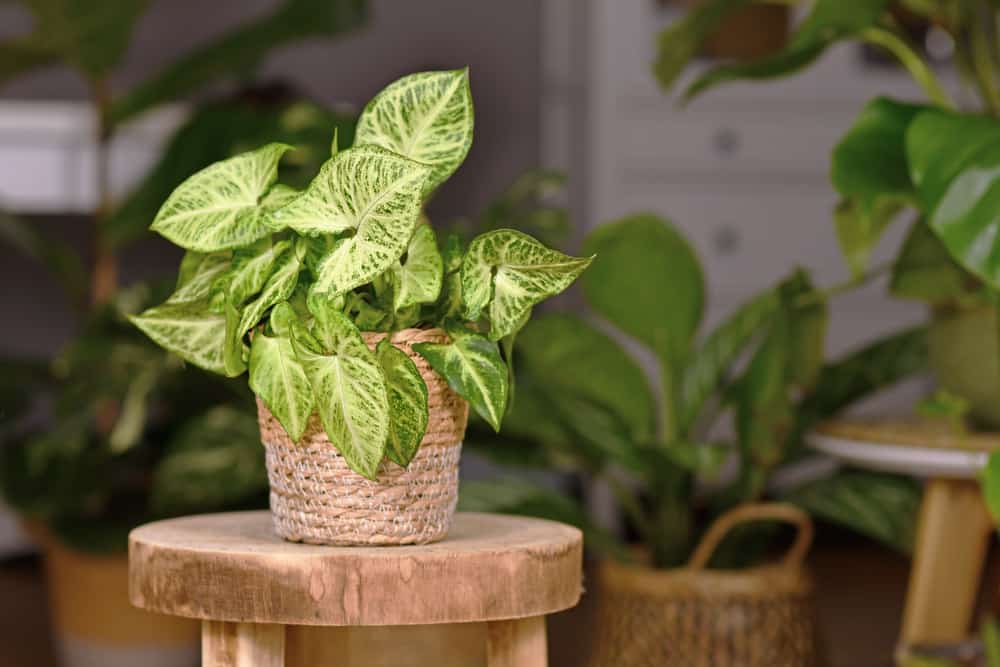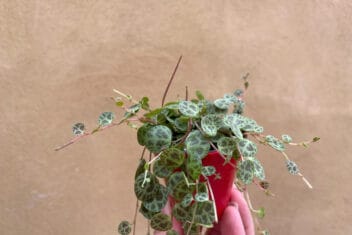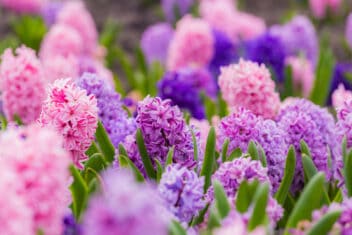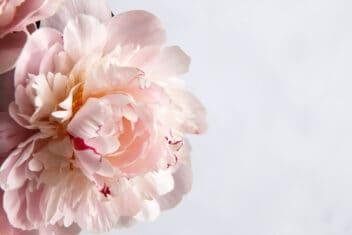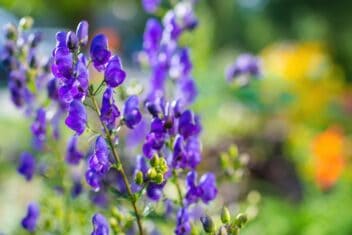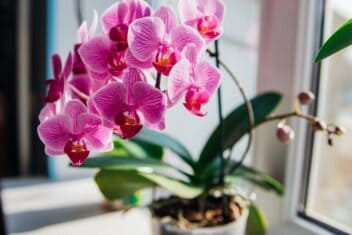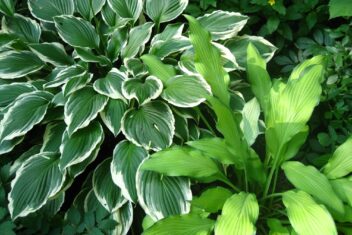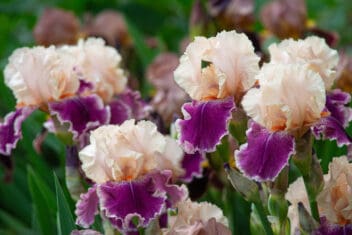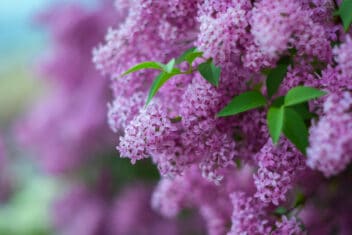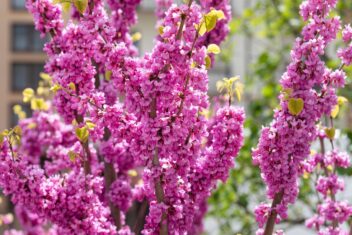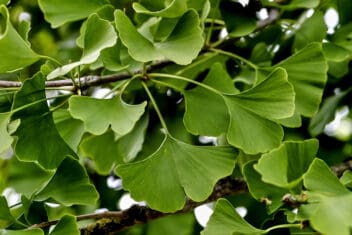If you’re looking for a showy houseplant that doesn’t need much maintenance, arrowhead plants are the way to go.
This plant has been popular for hundreds of years because it’s easy to care for and looks amazing in your home!
Let’s take a look at how to grow arrowhead plants, including general care and what to look out for when it comes to pests and diseases. Here’s everything you need to know:
All About Arrowhead Plants
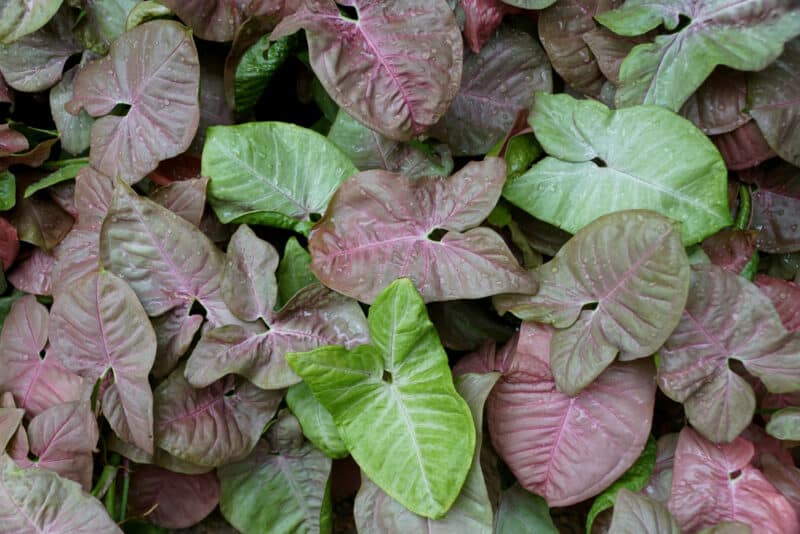
This marvelous plant (Syngonium podophyllum) also goes by the names: Arrowhead vine, American evergreen, five fingers, Nephthytis, and Syngonium.
Arrowhead plants come from Central and South America but have become popular houseplants because they’re low maintenance and easy to grow. They get their name from the appearance of the leaves.
The leaves start off as a simple triangle shape and progress to having deeply lobed ridges at the base, which makes them look like an arrowhead. You can find them in a variety of colors, from dark green and light green, to pink or white varieties!
It can be grown outdoors in the USDA Hardiness Zones 10-12, but makes a marvelous houseplant.
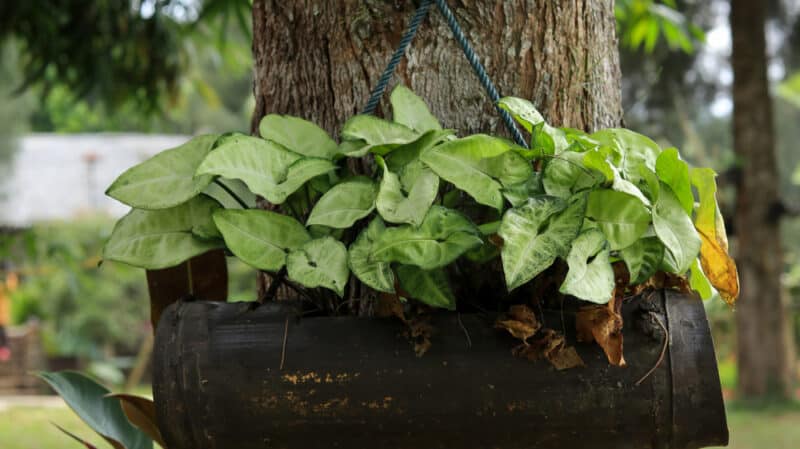
Best Arrowhead Plant Varieties
Choosing a houseplant, in general, can be tricky as there are dozens of species to choose from. Arrowhead plants come in dozens of cultivars, as well, so narrowing it down is a challenge. There are so many wonderful options!
To make it easy for you here are six exceptional cultivars of arrowhead plants:
Cream Allusion
This lovely cultivar has medium-size leaves which are light green and cream with speckles of pink.
White Butterfly
One of the most popular cultivars of arrowhead plant is ‘White Butterfly.’ The leaves are distinctive light green and cream with dark green edges and veins.
Strawberry Cream
In contrast to the green color of many arrowhead plant cultivars, ‘Strawberry Cream’ is bright pink when mature. When this plant is under sun or direct light, the leaves seem to sparkle, so it’s guaranteed to catch people’s attention!
Berry Allusion
For a more subtle cultivar, ‘Berry Allusion’ is the ideal choice. The leaves turn pale green when mature and have some pink along the midvein, but not very much.
Pink Allusion
‘Pink Allusion’ is one of the most eclectic in terms of color. It has light green leaves, dark green edges, and pink veins running through it. You will love having this in your home.
Painted Arrow
One of the best choices if you want something light in color is ‘Painted Arrow.’ It has pale cream leaves with subtle speckles of light green.
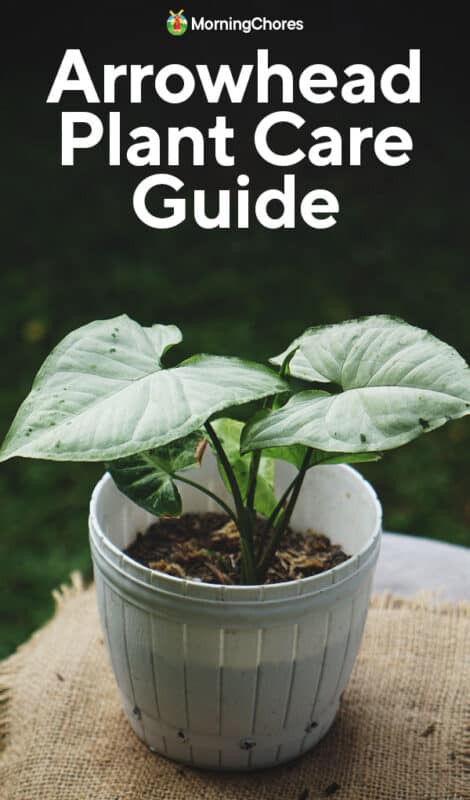
Caring for Arrowhead Plants
As always, you need to prioritize picking the right soil for your arrowhead plant. This plant can survive in a traditional soil potting mix, but because it’s an epiphyte, it will do better in something custom-made. Use two parts potting soil, one part moss, and one part orchid bark.
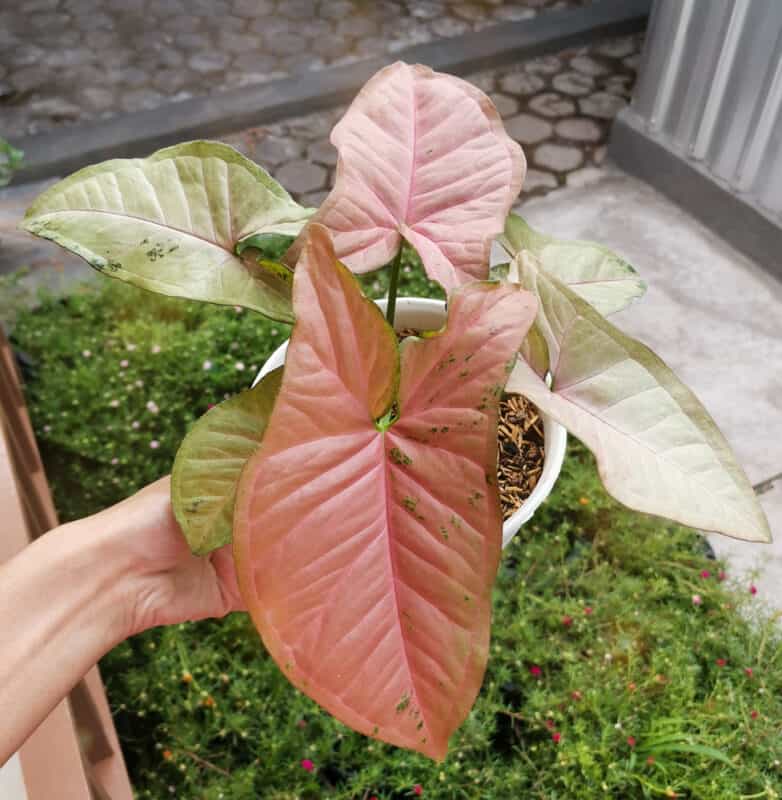
Another good tip for avoiding rot on your plant is choosing a clay or terracotta pot as it allows the moisture to evaporate more quickly.
Light Exposure
Arrowhead plants like moderate amounts of light. Bright, indirect light for a majority of the day is just right. The plant can handle a little direct light if you acclimate it gradually, but avoid the strong afternoon sun.
The leaves are sensitive to direct sun, so any prolonged exposure to intense light can cause permanent damage.
That being said, depending on the variety, different arrowhead plants can tolerate different levels of light, so check on your particular cultivar’s requirements.
Temperature and Humidity
As arrowhead plants come from the warm climates of Central and South America that means that they prefer warm growing conditions. The temperature should be above 60°F at all times.
Your arrowhead plant should have average humidity levels. If your home doesn’t already have moderate levels of humidity, you’ll need to do some work to adjust it.
Humidifiers, humidity trays, grouping plants, and misting the plants daily are all methods of increasing humidity.
Watering
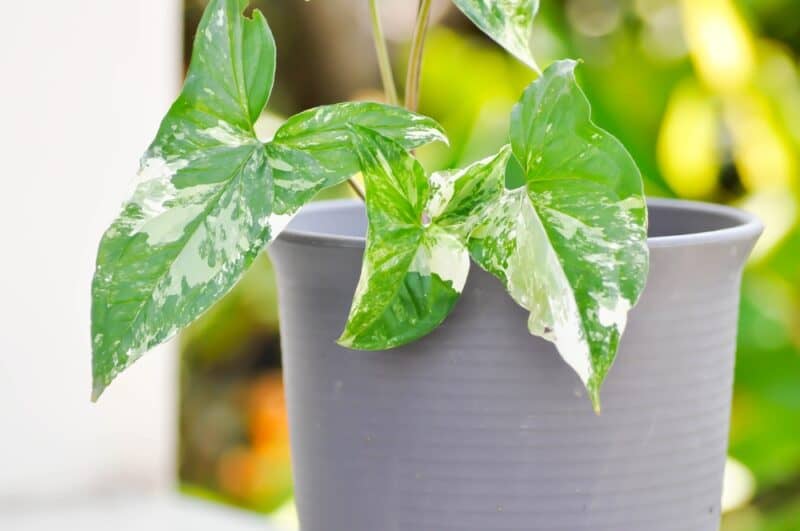
Watering your arrowhead plant is straightforward. Once the top inch of soil dries out, add more water. You should water the plant regularly in spring and summer and reduce the amount of water when winter comes.
It’s essential to check in on the plant every few days to make sure it’s not drying out too much. Avoid watering too frequently because it causes root rot.
Feeding
Arrowhead plants should be fertilized once a month with a liquid houseplant fertilizer. Stop fertilizing in winter when the plant goes dormant.
Common Pests and Diseases
It’s important to be aware of any pests and diseases that might infect your arrowhead plant so you can head them off. After all, it’s never fun to walk into your living room and find your plant struggling to survive. Especially when it’s a plant that is as hardy as this one.
Often, the main cause of browning leaves is low humidity. A problem like this can be easily avoided by increasing the humidity levels. You can mist the leaves daily, or invest in a humidifier. You can also use humidity trays and try grouping your plants.
Root Rot

As we already mentioned, root rot is due to too much moisture and/or not using well-draining soil.
The first sign of root rot is yellow leaves, stunted growth, and stem collapse. If you notice this, then you should take the plant out of the pot and inspect the rootball. Look to see if the root is brown and mushy, which means you need to take action immediately.
Clear away all the soil from the roots, trim away all the dead or mushy bits, and spray the roots with copper fungicide or hydrogen peroxide diluted in half with water. Then, repot in fresh soil after cleaning the container with soap and water.
Spider Mites
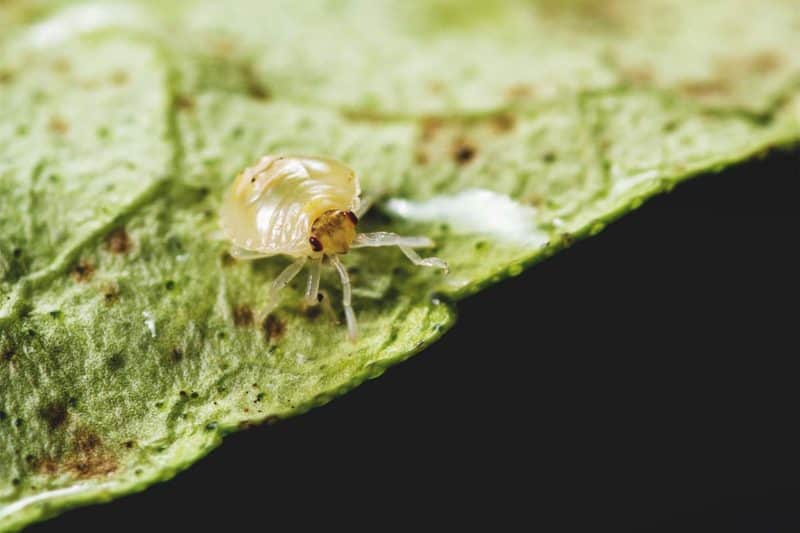
Spider mites are sneaky because they’re so hard to see, and they can cause serious harm to your arrowhead plant. The main areas these pests like to inhabit are under the leaves, the space between the stem and petiole, and the midrib section.
If you see any spots of silver dots, stippling on the leaves, or fine webbing, then you’ve probably got spider mites. Before you get too worried, there are many solutions to this problem.
First, isolate your plant and prune badly infested stems. Then, spray the plant with a blast of water to knock any leftover mites loose.
In general, there are some tips to follow to prevent spider mites from infecting the plant in the first place. You can try cleaning the leaves, increasing humidity, and doing regular health checkups to ensure that your plant isn’t stressed.
Plant Friends
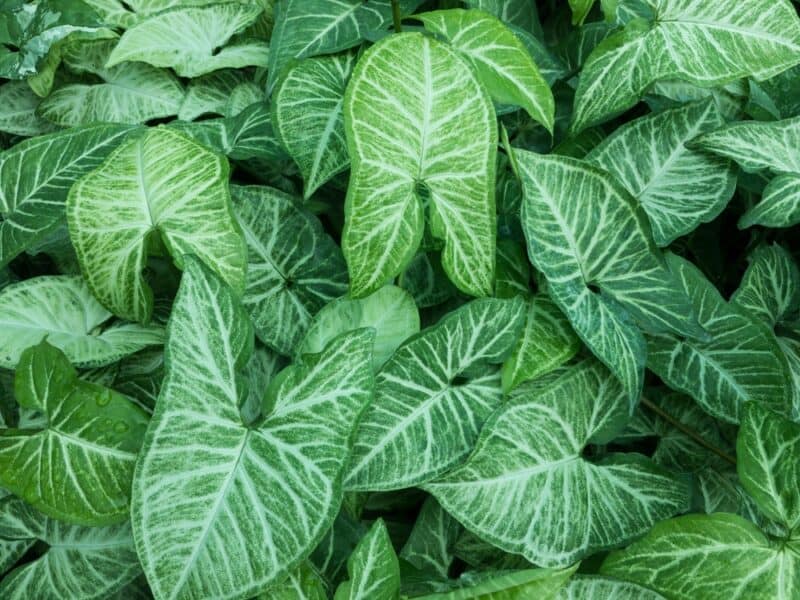
Giving your arrowhead plant another plant friend can make your space more colorful and interesting. Grouping plants that enjoy humid conditions also increases the collective humidity around the area.
So, what plants go well with arrowhead plants?
- Philodendrons
- Staghorn fern
- Pothos
- Rattlesnake plants
- Spider plants
If you’re looking for a plant friend then one of these options will make a great companion to your arrowhead plants. But feel free to stick to a single arrowhead, as well. They do fine on their own.
Are They Pet Friendly?
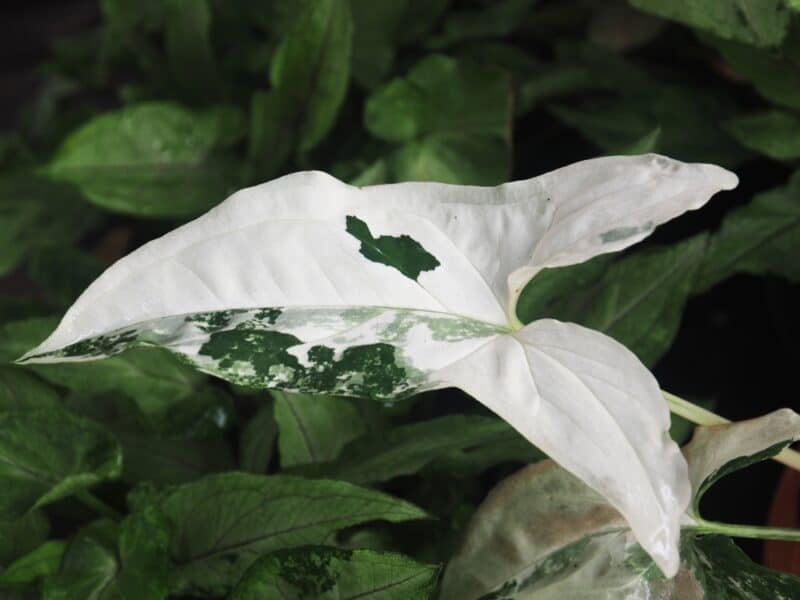
After browsing the internet of images of arrowhead plants and seeing how magical they look you might be already buying the supplies and prepping the right spot. But hang on. Before you plant, you have to be sure your pets won’t be hurt if they take a bite.
Arrowhead plants can be toxic to cats, dogs, and horses, according to the ASPCA. It can cause irritation, swelling, vomiting, and problems breathing. Keep them away from pets
